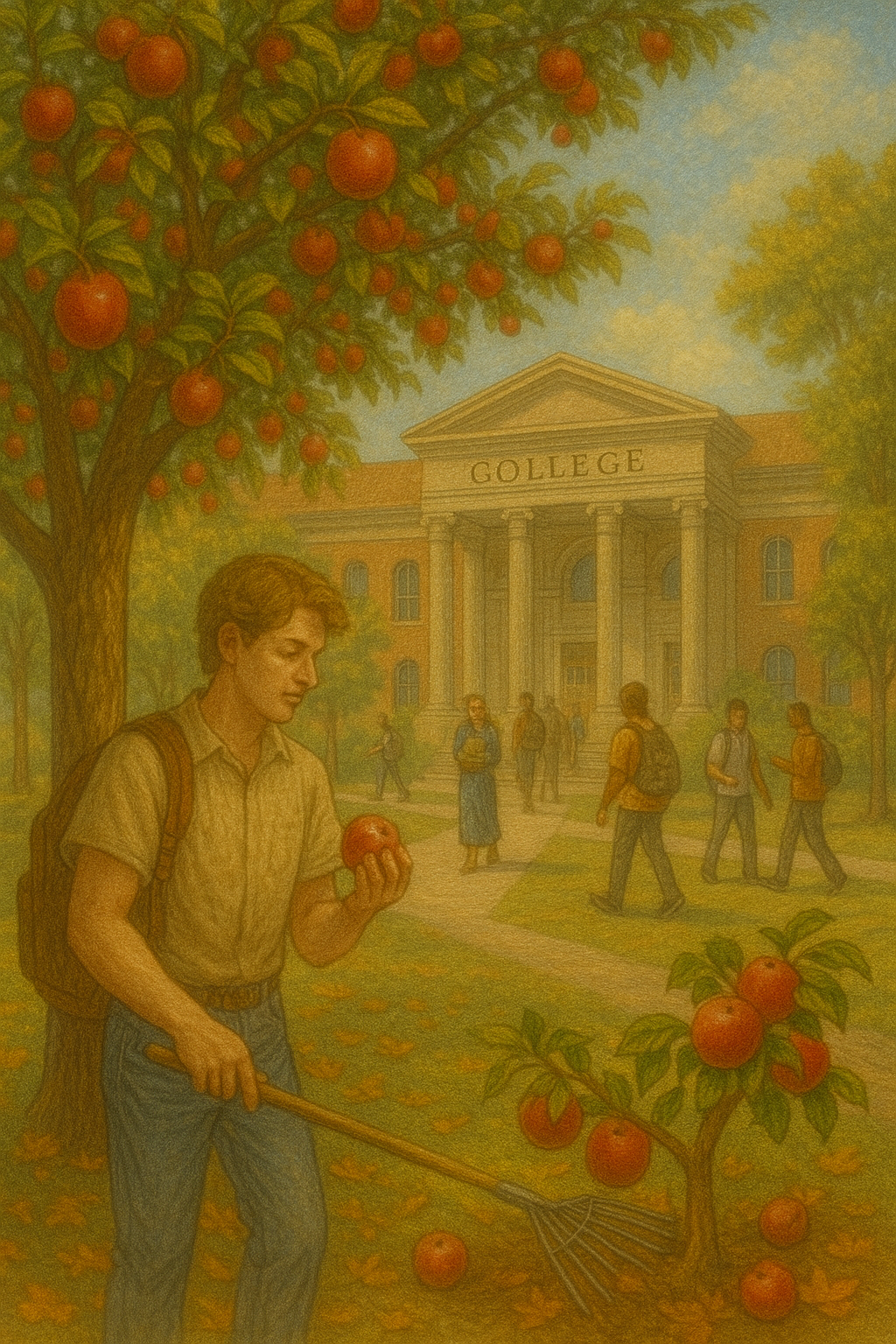
- Published on
- Authors

- Name
- ric de yuga 😄
🍎 Fruit Trees on Every Quad: Why College Campuses Should Feed the Future
Picture this:
You’re late to class, racing across the quad—and you pass a ripe orange tree.
You pluck one. Peel it. Keep moving. No vending machine. No transaction.
Just living nourishment, grown on the land where you learn.
Why isn’t this normal?
It should be.
🌳 The Case for Edible Campuses
Every year, universities spend millions landscaping with grass, exotic shrubs, and ornamentals that provide zero food value.
Meanwhile:
- Students face rising tuition and food insecurity
- Dining halls waste thousands of pounds of food per week
- Campuses import snacks instead of growing snacks
- Thousands of pounds of fruit could be grown for free, just by planting the right trees
“A college that can build football stadiums can also plant lemon trees.”
🍊 The Plan: Compost In, Fruit Out
Let’s transform waste into wellness with a regenerative loop:
1. 🌱 Local Fruit Tree Orchards on Campus
Line walkways, libraries, and dorms with low-maintenance native fruit trees:
- 🍏 Apples
- 🍊 Oranges
- 🥭 Loquats
- 🍌 Bananas (for warmer regions)
- 🍑 Figs, pears, pomegranates
Use pollinator-friendly groundcovers instead of sterile mulch
Add signs with nutritional facts, care info, and harvest guidance
Students shouldn’t just study photosynthesis.
They should taste it.
2. ♻️ Closed-Loop Compost Hubs
Install compost drop-offs near:
- Dining halls
- Student apartments
- Lecture buildings
Use food waste and yard trimmings to:
- Enrich the soil
- Reduce methane emissions
- Educate students on ecological literacy
Each bin becomes a community learning station—with signage explaining how last night’s salad becomes next spring’s apple.
🧠 Why This Matters
🍽️ Food Security
- 1 in 3 college students faces food insecurity
- Fruit trees offer free, accessible calories with no stigma
- Students can eat while walking, reading, or resting
🌎 Sustainability
- Trees sequester carbon, clean air, and reduce urban heat
- Compost reduces landfill use and regenerates soil
- Campuses become climate-resilient ecosystems, not just concrete blocks
🧘♂️ Mental Health
- Nature exposure reduces anxiety
- Fruit picking offers joy, beauty, and presence
- Campus becomes a nurturing space, not just a pressure cooker
“A healthy campus feeds its students—body, mind, and future.”
💸 What It Costs (And Why It Pays)
Planting fruit trees and installing compost bins costs a fraction of what universities spend on landscaping, sports branding, or new admin offices.
But the ROI?
- Less food waste
- Healthier students
- Cooler, greener campuses
- A new cultural standard for educational abundance
Students can even volunteer to harvest, track yields, and study soil regeneration as part of their coursework.
🌿 Final Thought: Education That Nourishes
What if every university planted orchards of knowledge and nourishment?
What if walking to class became a lesson in ecology, generosity, and edible systems thinking?
What if the next revolution in education wasn’t in the cloud—but in the ground?
“A single apple tree can feed hundreds.
A single idea can feed generations.Let’s plant both.”
Locals ACRs can grab free fruit,
students can cash in on delivering fruit to return stations for gator bucks
